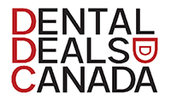A Snapshot of Oral Health in Canada: Key Statistics, Trends, and the Impact of Health Expenditure
Introduction: Oral health is an essential component of overall well-being, contributing not only to our physical health but also to our quality of life. In Canada, the state of oral health is closely monitored and analyzed to understand the progress and challenges ahead. In this blog post, we will provide a comprehensive overview of oral health in Canada, including key statistics, trends, and the impact of health expenditure. We will also explore recent data from the National Health Expenditure Database (NHEX), shedding light on the financial aspects of healthcare and oral health.
Access to Dental Care: Approximately 80% of Canadians have access to a dentist, indicating a positive trend in the accessibility of dental care services across the nation. Regular dental check-ups and professional care are vital for maintaining oral health.
Dental Insurance Coverage: However, a significant concern is the fact that 32% of Canadians lack dental insurance. This gap in coverage can be a major hurdle for many individuals and families, making it challenging to afford routine dental visits and necessary treatments. Addressing this issue is crucial to ensure equitable access to oral healthcare.
Trends in Dental Decay Rates: One of the most encouraging aspects of oral health in Canada is the remarkable decline in dental decay rates over the past four decades. Health Canada's findings reveal substantial improvements:
- The percentage of Canadians visiting a dentist annually has risen from 49.5% to 74.5%.
- Children with at least one decayed tooth have decreased from 74% to 23.6%.
- Adolescents with at least one decayed tooth have decreased from 96.6% to 58.8%.
- The average number of decayed, missing, or filled teeth per child has dropped from 6 to 2.5.
- The percentage of adults with no natural teeth has decreased from 23.6% to 6.4%.
These improvements are a testament to the effectiveness of regular dental check-ups and improved oral hygiene practices.
Impact of Health Expenditure: To gain a deeper understanding of the oral healthcare landscape, we must also consider the financial aspects. The National Health Expenditure Database (NHEX) provides valuable insights into healthcare spending in Canada, including dental care. Here are some key findings from the 26th edition of the annual publication on health expenditure trends:
- Total health spending in Canada is projected to reach $331 billion in 2022, equating to $8,563 per Canadian. Health expenditure is expected to represent 12.2% of Canada's GDP in 2022.
- After experiencing high growth rates of 13.2% in 2020 and 7.6% in 2021, total health expenditure is expected to rise by 0.8% in 2022.
- Hospitals, physicians, and drugs continue to account for the largest shares of health spending in 2022, collectively representing more than half of total health spending.
Furthermore, spending related to the COVID-19 pandemic has continued into 2022, with COVID-19 Response Funding making up a significant portion of total health spending.
Canada has made significant strides in improving oral health, as evidenced by declining dental decay rates and improved access to dental care. However, challenges persist, particularly the lack of dental insurance coverage for a substantial portion of the population.
Understanding the financial aspects of healthcare through the NHEX data provides valuable context for addressing these challenges. As we move forward, it is essential to focus on policies and initiatives aimed at expanding dental insurance accessibility and promoting oral health. By doing so, we can continue to enhance the state of oral health across Canada, ensuring that every Canadian can enjoy the benefits of a healthy smile. Stay tuned for more insights into Canadian oral health as we dig deeper into disparities in oral care and explore the impact of oral health problems on various demographic groups in upcoming blog posts.

